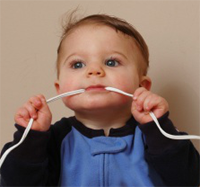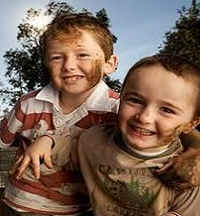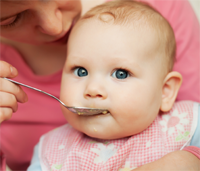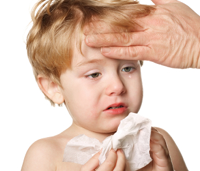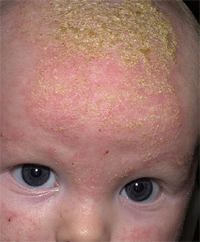Book reading in kids Currently we are in technology era where everything is just a click away. Television, computer games, Internet, phone… these occupy more space in our entertainment world. Most of the kids stopped going to play grounds, reading books, watching a play at theatre. If we lead our future generations in to such world, we have to show them how books used to influence our lives and how much it used to matter to us “to hold a book in hand and read, indulge in to it and enjoy it to the fullest”. Don’t you want your child also enjoy such beautiful things in life? If yes, it’s time for you all to introduce books to them and help them to develop their own library. For this, parents need to do little home work and get information on the books which are suitable to your child’s age. If you identify that book, try to gift them on the occasions like their birthday, children’s day, festivals, New Year so on so forth. You will find so many occasions if you are willing to do so. Remember, never allow kids to stick on to the e-books, as they might shift their focus to something else while Try to introduce some story books to kids; ask them to spend some time on book reading by taking small intervals while playing computer games, watching TV and busy with Mobile games. You may have to convince them to make a deal on this but, trust me it’s worth doing so. Slowly started habit of Book reading can definitely mould your child in to a calm personality, helps to improve listening skills and patience. Slowly, they themselves take off and demand for more books to fill their book rack. Enjoy! Happy Parenting!!! M.S. Bhavana
Generally kids tend to be ill behaved when they do not get things as and when they want or if you are trying to discipline them. In this scenario they shout at parents or become adamant to release their anger. If you feel that all these tantrums are temporary, then ignoring such actions is the best way to deal with. Or else if you try to pamper them and negotiate more on this they will be more reluctant. However, ignoring them will lead the kids to behave more aggressively to gain attention. In these circumstances you need to handle the situation more patiently… At times, kids will beat and bite other kids and elders for that matter; if so, you have to understand that, child is trying to vent out his/ her anger and frustration; this is the time for parents to sit and talk with your kid and convince him/ her and extend your support to them to share their emotions with you. If you generate positive vibes, that helps the child to come out of the shell and think positively. Anger management is another great technique that helps people to maintain harmonious relationship with others. Parents should remain as role models for kids and teach them on how to control their irritation. Above all, communication is the best key to solve any kind of problems that arise among kids. Listening to them patiently is also another factor, which helps children to develop interest in sharing their feelings with parents. - M.S. Bhavana
Primary teeth which will develop in kids are called Milk teeth. Though they are temporary, they lay the path for the adult teeth which are permanent. When kids are very much used to chocolates, ice creams and sweets they tend to develop Tooth decay and this will eventually disturb the secondary teeth. If infection is more in primary tooth, then it can pass through the decay and can damage the development of adult tooth while it is developing.. However you can take some precautions and avoid these problems. • Milk teeth are generally seen in children up to 10-12 years old. So when children are growing, educate them about the Tooth development and risk of tooth decay. • Visit your dentist in regular intervals and get the check up done. • When kids are losing their Milk teeth, they will have pain and uneasiness. To overcome this problem, give them a glass of lukewarm water with salt and ensure that they gargle the water 3-4 times in day. • Take enough care while brushing the teeth. If you observe any bleeding, visit your dentist immediately. • Do not allow kids to push the tooth which are about to come out. Let it come out naturally. If you put more pressure to pluck the tooth you may get headache also as the nerve may get damaged. • During the stage of their milk tooth loss, some kids will also have the habit of playing with the teeth by pushing their tongue in to the space between the Teeth. This will have a negative impact on the upcoming tooth alignment. Hence if you watch your child doing such practice, refrain immediately. - M.S. Bhavana
You all must be surprised when you read the title… yes you read it right….dirt is really good for children… Dirt is a natural part of the process of children understanding life and growing…. There should be certain privileges that allow children to live fully, such as playing in a ground without the fear of getting dirty or painting a picture without a care about paint stains. All these little but crucial experiences help nurture creativity, and build confidence in a child. Such activities develop self confidence in children and build interpersonal skills in children in long run. Above all, kids will develop resistance power in their bodies if they are playing in the dirt. If you are over protective about your child’s idea of playing in the dirt or touching things which have dust, then you are stopping their bodies to get naturally immunized. Generally, when people have small kids at home they try to sanitise every small thing/ play toy of the baby. You should maintain hygiene but at the same time you should also allow them to play with their toys freely. When you do this, their body will build the resistance power and slowly will start fighting with the bacteria which attacks them. In this process, slowly exposing to dust & dirt can only help baby to build the resistance power. So next time, when you observe your child playing with friends in a play ground enjoy rather getting panic. Have a happy parenting!!! - Bhavana
When the much awaited time comes and you already have a new guest arrived in to the family,… In spite of all the preparations you have done, you still need to know and understand much more things as time goes. In this list, Baby’s sleep is the biggest challenge for the new parents. Here are some tips to overcome that. 1. Every parent should understand that infants body clock will not be ready till few months; hence they don’t have any stipulated time for the sleep& hunger. 2. Parents should try to put them to sleep after every feed and ensure that they cuddle the baby till he/ she goes into deep sleep. 3. Always let your baby sleep on their back as this position is mostly advised by the health experts. 4. Make the bed twice in a day to maintain the hygiene levels. Let the air flow is the in the room and bright light is available too. 5. Play some smooth music when your baby is asleep. 6. Never ever leave the kid unattended even though he/ she is sleeping. Make sure that you keep an eye on the infant and be in the radius where you are able to attend if need arises. - Bhavana
కంప్యూటర్లు వచ్చాక ప్రతీదీ మారిపోయింది. టెలిగ్రాఫ్ ఆఫీసు కూడా మూతపడిపోయింది, ఒక ఈ-మెయిల్ కొడితే ఎంతో మందికి ఒకటేసారి విషయం తెలిసిపోయేపుడు ఒకొక్కరికి విడిగా టెలిగ్రాంలు పంపించాల్సిన అవసరం లేదనుకుంటున్నారు లేదా ఒక సెల్ ఫోన్ తో చాలా మందికి ఎమర్జెన్సీ విషయాలేమైనా తెలపవచ్చు అనుకుంటున్నారు. ఎలక్ట్రానిక్ పరికరాలు ఎంతగా ప్రపంచాన్ని మార్చేసిందో నేను మీకు ప్రత్యేకంగా చెప్పనక్కరలేదు. చిన్న చిన్న పిల్లలు కూదా హోం వర్కులు ఇంటర్నెట్ ద్వారా చాలా త్వరగా చేసుకుంటున్నారు. వారికి సాయం చేయడానికి ఎన్నో వెబ్ సైట్లను మొదలు పెట్టారు అన్ని రకాల భాషల్లో. పిల్లలకు కార్టున్లు, వాళ్ళకిష్టమయిన పాటలను చూడడం, వినడం, నేర్చుకోవడం కూడా చేస్తుంటారు. ఒకప్పుడు అమ్మలు పాటలను నేర్పించాల్సి వచ్చేది . ఇప్పుడైతే చిన్న పిల్లలకు కూడా లాప్ టాప్ లో రైమ్స్ కార్టున్లు వాళ్ళంతట వాళ్ళే పెట్టుకుని చూసేసుకుంటున్నారు. అంతే కాదండోయ్ ఏడాది వయసు లోపు పిల్లలే సెల్ ఫోన్లు పట్టుకుని వాళ్ళకావల్సిన రైమ్స్ ఒకటే కాదు, పవన్ కళ్యాణ్ పాటలు, మహేష్ బాబు పాటలు పెట్టుకుని వింటుంటే అది చూసి మురిసిపోతున్నారు తల్లి తండ్రులు, తాత, బామ్మలు. సెల్ ఫోన్లు పిల్లల చేతులకిచ్చేసి వాళ్ళు వాటిని పీకి పడేస్తే కూడా అది తప్పురా అని చెప్పకుండా చూసి మురిసిపోతూ, 'మా పిల్ల/పిల్లడు ఎంత అల్లరో బాబు, పట్టుకోలేక పోతున్నాము,' అని ముద్దుగా కంప్లయింట్లు. అందరూ అలా వుంటారని కాదు లెండి. పిల్లలు పడుకున్నపుడే లాప్ టాప్లపైన కానీ కంప్యూటర్ లో పని చేసుకుంటారట ఎందుకంటే లేచినప్పట్నుండి వాళ్ళకిష్టమయిన పాటలు పెట్టమని గోల చేస్తారట. చూసారా ఒక ఎలక్ట్రానిక్ పరికరం ఇంట్లో చిన్న పిల్లల పైనే ఇంత ప్రభావం చూపిస్తుంటే మరి చదువుకుంటున్న పిల్లలు ఇంకా ఎన్నేన్ని చేయగలరో ఆలోచించండి. ఫేస్ బుక్ లో పెద్దవాళ్ళే కాదు, చిన్న పిల్లలు కూడా అకౌంట్లు ఓపెన్ చేసి ఎంతో మందిని ఫ్రెండ్స్ ని చేసుకోవడమే కాదు, ఫోటోలు షేర్ చేసుకోవడం కూడా చేస్తుంటారు. 'ఫేస్ బుక" లో ఎక్కువగా పెద్దవాళ్ళుంటారు కాబట్టి 'ఇన్ స్టాగ్రామ" లో ఫ్రెండ్స్ చేసుకుని ఫోటోలు షేర్ చేసుకుంటుంటారు. ఇందులో ఎక్కువగా చిన్నపిల్లలు, టీనేజర్లు వుంటారు. ఏ కొత్త పరికరం అయినా అందరికీ అందుబాటులోకి వచ్చినపుడు దాని ద్వారా ఎన్నో మంచి జరిగే అవకాశాలుంటాయి అలాగే చెడు కూడా జరిగే అవకాశం కూడా వుంటుంది. అందుకని మన జాగ్రత్తలో మనం వుండడం చాలా అవసరం ముఖ్యంగా ఈ సోషల్ నెట్ వర్క్ ల్లో ఎలాంటివారైనా దూరే అవకాశం వుంది. అన్ని తెలిసిన పెద్ద వాళ్ళే ఎన్నో మోసాలకు గురి అవుతుంటే ఏ అభం శుభం తెలియని చిన్నారులు మోసకారుల చేతుల్లో మోసపోరని నమ్మకం ఏమిటి చెప్పండి? అదీ కాక ఈ సోషల్ నెట్ వర్క్ మొదలైనప్పటినుండి చిన్న పిల్లలని లైంగికంగా హింసించేవారికి మంచి నెట్ వర్క్ దొరికింది చాలా సులభంగా చిన్న వయసు అమ్మాయిలను, అబ్బాయిలను పట్టుకోవడానికి వాడుకోసాగారు. అమెరికాలో జరిగిన కొన్ని సంఘటనలు చూస్తే మనకి మతి పోతుంది, ఎలా మన ఇంట్లోనే మన పిల్లలతో స్నేహంగా వుంటూ వారి నమ్మకాన్ని పూర్తిగా పొందాక, వారి వీక్ నెస్లను వాడుకుని వారి అసలు రూపం చూపిస్తారు. ఇలాంటి నెట్ వర్కుల్లో అకౌంట్లు లేని వారిని చులకనగా చూస్తారు. కొంతమంది అమ్మాయిలు స్కూల్లో తమతో ఎవరూ ఫ్రెండ్స్ కాకపోవడంతో ఒంటరితనంతో బాధపడేవారు ఇదిగో ఇలాంటి సోషల్ నెట్ వర్క్ ద్వారానయినా ఫ్రెండ్స్ చేసుకుందామనుకుంటారు, వారి అదృష్టం బావుంటే మంచి ఫ్రెండ్స్ దొరికి వారు మంచి స్నేహాన్ని పొందుతారు. అంతా ఇలాగే జరిగితే ఇంక అసలు గొడవే లేదు. కానీ అంతా మంచివాళ్ళే వుంటారని చెప్పలేం కదా! ఒకమ్మాయి ఎంతో తెలివైనది, సంగీతం, చిత్రకళ అంటే చాలా ఇష్టం తనకి. తండ్రి వుద్యోగరిత్యా ప్రతి కొన్ని నెలలకి వూళ్ళు మారుతుండడంతో ఎక్కడా తనకంటూ క్లోజ్ ఫ్రెండ్స్ కాలేదు. దాంతో ఒంటరితనం పొగొట్టుకోవడానికి ఒక సోషల్ నెట్ వర్క్ లో ఫ్రెండ్ షిప్ చేసింది. కొన్నాళ్ళు స్నేహం చాలా బాగా సాగింది. స్కూల్ నుండి రాగానే హోం వర్క్ కాగానే తన రూమ్ లో ఫ్రెండ్స్ తో చాట్ చేసేది. కొన్నాళ్ళయ్యాక ఫ్రెండ్స్ అనుకున్న వారే ఆ అమ్మాయి అందాన్ని పొగడడం, సెక్సీ బట్టలే్సుకోమని గొడవ మొదలు పెట్టారు, వేసుకోనంటే తనతో ఫ్రెండ్స్ గా వుండమని లేదా తన గురించి అంతా చెడుగా రాసి స్కూల్లో పెడతామని అలాగే ఇంట్లో వారికి కూడా పంపిస్తామని బెదిరించడం మొదలు పెట్టారు. అప్పుడు తెలిసింది ఆ అమ్మాయికి స్నేహం పేరుతో ఎలాంటి వారి చేతిలో చిక్కుక్కుపోయిందో. ఆ ఒక్కసారి వారు అడిగింది చేస్తే తనని తన మానాన వదిలేస్తామని ఆమె నమ్మేలా చెప్పారు. ఒక్కసారి ఆ అమ్మాయి అశ్లీలంగా వుండగా తీసిన ఫోటోలు వారి చేతికి దొరకగానే తనని బ్లాక్ మేయిల్ చేస్తూ వారు ఏది చెబితే అది చేస్తే అవి ఇంటర్నెట్ సైట్స్ లో పోస్ట్ చేసేవారు. వారు ఈ అమ్మాయి ఒక్కదానితోనే కాదు ఎంతో మందితో ఇలాగే చేసే గ్యాంగ్ అది. వారు అంతా పెద్దవారే ఏ వయసు వారితో ఆ వయసు వారిగా వుండి వారిని హింసించి వారితో అశ్లీల శృంగార ఫోటోలు తీసి ఎన్నో సైట్స్ ల్లో పోస్ట్ చేస్తారు. ఆ అమ్మాయి ఫోటోలు ఆన్ లైన్ లో చూసి స్కూల్లో పిల్లలు తనతో అసహ్యంగా ప్రవర్తించడం, అబ్బాయిలొచ్చి తమతో రాత్రుళ్ళు గడపడానికి రమ్మని హింసించడం, స్కూల్ ప్రిన్స్ పాల్ ఆ అమ్మాయితో మాట్లాడి అసలు విషయం తెలుసుకోకుండా సస్పెండ్ చేసారు. ఇంటికొచ్చి తన రూమ్ లోకెళ్ళి తలుపేసేసుకుంది తల్లి తండ్రులతో ఏమి చెప్పకుండానే. వారు భయపడిపోయి ఇద్దరూ బ్రతిమిలాడ్తూ, బయటికి రమ్మని తాము ఏమి అనమని ఎంతో చెప్పగా వచ్చి కూర్చొని తల్లి వొళ్ళో తల పెట్టుకుని ఆన్ లైన్ ఫ్రెండ్ షిప్ ఎలా మొదలయ్యింది ఎలా ఈ స్థితికి వచ్చింది అన్నీ వివరంగా చెప్పింది. తల్లి తండ్రి ఇందులో తన తప్పేమీ లేదనీ వారి గురించి పోలీసులకు కంప్లయింట్ ఇద్దామని, వేరే వూరికెళ్ళి కొత్తగా జీవితం మొదలు పెడదామని ధైర్యం చెప్పారు. ఆ రాత్రి తల్లి తండ్రితో కూర్చొని ఎంతో ఉత్సాహంగా ఎన్నో కబుర్లు చెప్పింది. మధ్య రాత్రి తర్వాత తన రూమ్ లోకి పడుకోవడానికి వెళ్ళి తలుపేసుకుంది. చాలాసేపు ఆలోచించి కూర్చొని వెబ్ కామ్ పెట్టుకుని తన గురించి, తన కుటుంబం గురించి, తన ఇంట్రెస్ట్స్ గురించి, భవిష్యత్తులో తను ఏం కావాలనుకుంది, ఆ తర్వాత తన ఆన్ లైన్ ఫ్రెండ్ షిప్ గురించి చెప్పి తను ఎలా మోసపోయిందో, మరెవ్వరూ ఎప్పుడూ ఇలా మోసపోకూడదని వారు ఎలా జాగ్రత్తగా వుండాలో చెప్పింది. అది యూ ట్యూబ్ లో పోస్ట్ చేసింది. పొద్దునే తల్లి కూతురిని నిద్ర లేపడానికి వచ్చి చూస్తే తమ చిట్టి తల్లి ఈ లోకంలో లేదని తెలుసుకుని గుండెలు బాదుకున్నారు తల్లి తండ్రులిద్దరూ. కూతురు రాసిన నోట్ చూసి యూ ట్యూబ్ లో కూతురు పోస్ట్ చేసిన తమ చిన్నారి కథని చూసి గుండెలవిసేలా ఏడిచారు. కొన్నాళ్ళ తర్వాత తమ కూతురిలా ఎవ్వరూ మోసపోవద్దని తల్లి తండ్రుల్లో, పిల్లల్లో ఇంటర్నెట్ వల్ల కలిగే ప్రమాదాల గురించి అవగాహన పెంచడానికి ప్రయత్నం చేస్తున్నారు. అందరూ ఇలాగే చేస్తారనుకుంటే పొరపాటు. ఒకసారి వర్జీనియా స్ట్రీట్ గ్యాంగ్ వాళ్ళు ఫేస్ బుక్ ఫ్రెండ్ షిప్ ఆధారంగా కొంతమంది హైస్కూల్ టీనేజ్ అమ్మాయిలను మాయ మాటలు చెప్పి బయట కాసేపు సరదాగా తిరుగుదామని రమ్మని చెప్పి వారు వచ్చాక కోక్ డ్రింక్స్ లో మత్తు మందు కలిపి ఇచ్చి వారు స్పృహ కోల్పోగానే వారిని రేప్ చేసి దాన్ని టేప్ చేసుకున్నారు. ఎఫ్.బి.ఐ (FBI) ఇన్వెస్టిగేషన్ లో తెలిసింది ఏమిటంటే ఈ టీనేజ్ అమ్మాయిలు ఎంత సులభంగా ఫేస్ బుక్ లాంటి సైట్స్ లో స్నేహాన్ని ఎంత అమాయకంగా నమ్ముతారోనని, వారు రమ్మనగానే ఏమి ఆలోచించకుండానే ఎలా వెళ్ళిపోయారు అనేది కూడా తెలిసింది. ఈ సోషల్ నెట్ వర్కులు మొదలయ్యే ముందే సామాజిక శాస్త్రవేత్తలు ఇవన్నీ ఎలా 'సెక్స్ ఇండస్ట్రీ,' కి దారి తీస్తుందో కొన్ని పేపర్స్ రాసి తెలియజేసారు. ముందుగా బాల బాలికలతో అశ్లీల శృంగారం, పోర్నోగ్రఫీ మొదలవుతుందనీ, పిల్లలని బెదిరించి వారితో ఫోటోలు తీయించుకుని అవి ఈ సైట్లల్లో ఫోస్ట్ చేస్తారని, ఆ తర్వాత ఇలాంటి సైట్ల ద్వారానే వ్యభిచారం కూడా చేయిస్తారని చెప్పారు. వారు అనుకున్నట్టే ఇవన్నీ జరుగుతూనే వున్నాయి. గ్రోప్ప్(Groppe) అనే సామాజిక శాస్త్రవేత్త ప్రకారం తల్లి తండ్రులు చాలా మంది పిల్లలు పెద్దవాళ్ళ సైట్స్ ల్లోకి వెళ్ళకుండా లాక్ సిస్టమ్ లాంటివి వాడతారు కానీ వారు గుర్తించని విషయం ఏమిటంటే ఫేస్ బుక్ లాంటి సోషల్ నెట్ వర్కుల్లో కూడా ఎక్కువగా ఇలాంటివి జరిగే అవకాశాలున్నాయి అలాగే వ్యభిచారం లాంటివి కూడా ఇలాంటి సైట్స్ ద్వారా చాలా సులభంగా ఎవరికీ అనుమానం రాకుండా జాగ్రత్త పడుతూ కొనసాగిస్తున్నారని అంటున్నారాయన. లీరి(Leary) గారి ప్రకారం ఆన్ లైన్ పొర్నొగ్రఫీలో దాదాపు 26% చిన్న పిల్లలే వున్నారు. మరో ఇద్దరు శాస్త్రవేత్తలు చిన్న పిల్లలు ఈ సెక్స్ ఇండస్ట్రీలో ఎంత శాతం చిన్నవయసు వారు వున్నారు అనే విషయం పై స్టడీ చేసారు. అందులో తేలిందేమంటే 12 నుండి 17 ఏళ్ళ వయసు వారు 59%, 6 నుండి 11 ఏళ్ళ వయసు వారు 28%, మరో 13% చాలా చిన్న వయసు వారు అంటే నర్సరీ స్కూల్ వయసు వారున్నారు. అందుకే లీరి(Leary) ఏమన్నారంటే చిన్న పిల్లల పొర్నోగ్రఫితో బిజినెస్ చేసే వేటగాళ్ళు ఇంటర్నెట్ మరియు ఈ సోషల్ నెట్ వర్కింగ్ సైట్స్ ని ప్రవేశ ద్వారంలా ఉపయోగించుకుంటూ ఈ సైట్స్ ని మరింత శక్తివంతంగా వాడుకుంటూ వారికి కావాల్సిన లక్ష్యం (చిన్నపిల్లల) కోసం వెతకడం మరింత ఉధృతంగా చేస్తున్నారు. పిల్లలు తమ కంటే బాగా ఈ ఎలక్ట్రానిక్ పరికరాలను చాలా బాగా ఉపయోగిస్తున్నారని, తమకు వాటిని ఎలా వాడాలో సరిగా తెలియదని చాలా మంది తల్లితండ్రులు గొప్పగా చెప్పుకోవడం వింటుంటాము మనం. వారికి తెలియని విషయం ఏమిటంటే మనం జాగ్రత్తగా వుండకపోతే ఎన్నో ప్రమాదాలకు గురయ్యే అవకాశాలున్నాయని. కాబట్టి ఇపుడు మనం పిల్లలకి ఎలాంటి జాగ్రత్తలు తెలియజేయాలి, తల్లి తండ్రులు ఎలాంటి జాగ్రత్తలు తీసుకోవాలి మనం ముఖ్యంగా తెలుసుకోవాలి. ఇందులోని సలహాలన్నీ 'చిన్న పిల్లలు, ఇంటర్నెట్ ప్రభావం,' అనే స్టడీ చేసిన వారు ఇచ్చినవి వున్నాయి. ముందు తల్లి తండ్రులు ఇంట్లోకి ఎటువంటి ఎలక్ట్రానిక్ పరికరాలు తెచ్చినా వాటి గురించి పూర్తిగా తెలుసుకోవాలి. ఇంటర్నెట్ లో పిల్లలు ఏది పడితే అది చూడకుండా పేరంటల్ కంట్రోల్స్ అని సిస్టమ్ లో పిల్లలు పెద్దవాళ్ళ సైట్స్ లోకి వెళ్ళకుండా లాక్ చేయవచ్చు. అవి చేసినా మామూలు సోషల్ నెట్ వర్కులు చూసినా, అందులో చేరినా పర్వాలేదు అనుకోవచ్చు కానీ వారు ఎలాంటి వారితో స్నేహం చేస్తున్నారు, ఎలాంటి విషయాలు అందరితో పంచుకుంటున్నారు లాంటి విషయాలు గమనిస్తూ వుండాలి. పిల్లలు వయోపరిమితిని గుర్తు పెట్టుకోవాలి. తప్పు వయసు చెప్పి చేరేవారుంటారు. అలా చేస్తే ప్రమాదాల్లో చిక్కుకుంటారని వారికి అర్ధం అయ్యేలా చెప్పాలి. ఇప్పుడొచ్చే ఫొన్స్ లోనే ఇంటర్నెట్ మొత్తం చూసుకోవచ్చు, పిల్లలకు ఒక వయసు వచ్చేదాక ఫోన్ లు ఇవ్వకపోతేనే మంచిది. ఒకప్పుడు సెల్ ఫోన్లు లేకుండా పిల్లలు వుండలేదా అంటే రోజులు మారాయి కదా, పిల్లలకి సెల్ ఫోన్లు లేకపోతే కష్టమవుతుంది అంటారు. ఏది వాడుతున్నా తల్లి తండ్రులు వాటి వల్ల వచ్చే ప్రమాదాల గురించి పిల్లలకు బాగా వివరించి అపుడపుడు వారు ఏం చేస్తున్నారో గమనిస్తూ వుండాలి. పిల్లలతో అన్ని విషయాలు స్పష్టంగా,ప్రేమగా మాట్లాడుతూ వారితో కమ్యునికేషన్ గ్యాప్ రాకుండా చూసుకోవాలి. మీరు ఇంట్లో మీ స్వంతంగా పిల్లలు పాటించాల్సిన ఇంటర్నెట్ రూల్స్ పెట్టి వాటిని వారు తప్పకుండా పాటించేలా చూసుకోవాలి, ఉదాహరణకు రోజూ ఇంత సమయం కంటే ఎక్కువగా కంప్యూటర్ కానీ, లాప్ టాప్ కానీ, సెల్ ఫోన్లో ఇంటర్నెట్ వాడకూడదని మీరే నిర్ణయించాలి. ఆన్ లైన్ లో వారి ఫోన్ నెంబర్లు కానీ, ఇంటి అడ్రస్ లు కానీ మనకు తెలియని కొత్తవారికెవ్వరికీ ఇవ్వకూడదని ఖచ్చితంగా చెప్పాలి. ఎవరైనా సోషల్ నెట్ వర్క్ లో ఫ్రెండ్ అయ్యి బయట ఎక్కడో కలుసుకోవడానికి రమ్మంటే వెళ్ళకూడదని, అలా ఎందుకు వెళ్ళకూడదో వారికి ప్రేమగా తెలియచేయాలి. సోషల్ నెట్ వర్క్ లో స్నేహం చేస్తే మరీ ఎక్కువ సమాచారం పిల్లలు తమ గురించి ఇచ్చేస్తే వారి వీక్ నెస్ లను తెలుసుకుని వారిని సైబర్ బుల్లియింగ్ కి, ఇంటర్నెట్ ద్వారా పిల్లలను ఫోర్నోగ్రఫీకి వాడుకునే వారు, పిల్లల అమాయకత్వాన్ని ఆసరా చేసుకుని వారిని మోసం చేసే అవకాశాలున్నాయని తెలియచేయాలి. ఫోటోలు షేర్ చేసుకునేపుడు దాంట్లో వివరాలు సరిగ్గా చూసి పెట్టాలి, కొంతమంది ఆ ఫోటోల్లోనే అందంగా వున్న లేక వారి శరీర అందాలను అంచనా కట్టుకుంటారు, అందుకని చాలా జాగ్రత్తగా వుండాలి ఈ విషయాల్లో పిల్లలు. తల్లి తండ్రులు అప్పుడప్పుడు పిల్లలు ఎలాంటి ఫోటోలు షేర్ చేసుకుంటున్నారో గమనిస్తూ వుండాలి. పిల్లలు ఒకోసారి ఎదుటివారు చిన్నవాళ్ళో, పెద్దవాళ్ళు చిన్నపిల్లల్లా స్నేహం చేస్తున్నారో తెలుసుకోవడం కష్టం. అందుకని వారు తమ మనసులోని విషయాలన్నీ వారితో పంచుకుంటుంటారు. అటు వైపు వారు వారి వయసు పిల్లలైతే పర్వాలేదు కానీ అలా కానప్పుడే వీరు వారితో పంచుకున్న విషయాలను పట్టుకుని వీరిని తప్పుదారి పట్టించడానికి ప్రయత్నిస్తారని వాళ్ళకి అర్ధం అయ్యేలా చెప్పాలి. పిల్లలు వారికి వ్యక్తిగతంగా తెలిసిన వారితోనే ఈ సోషల్ నెట్ వర్కుల్లో స్నేహం చేస్తే ఏ ఇబ్బంది వుండదు. కొత్త వాళ్ళతో చేసేపుడు కొన్ని విషయాలు గుర్తు పెట్టుకుని జాగ్రత్తగా వుండాలి ముఖ్యంగా, వారు అవవసరంగా వారి అందాన్ని పొగడడం, వారిని ఎలాంటి బట్టలు వేసుకోవాలో, మేకప్ చేసుకోమని బలవంతం చేయడం లాంటి విషయాలు చేస్తే వెంటనే తల్లి తండ్రులకు చెప్పడమో, వారిని ఫ్రెండ్స్ లిస్ట్ నుండి తీసివేయడమో చేయాలి, ఆ నెట్ వర్క్ వారికి పిర్యాదు చేయాలి వారి ప్రవర్తన అనుమానస్పదంగా వుంటే. పిల్లలకు లాప్ టాప్ లు వాడడానికి అనుమతినివ్వకూడదు. ఇంట్లో కంప్యూటర్ వుంటే ఆ సిస్టమ్ ని అందరూ తిరిగే చోట పెట్టాలి, లివింగ్ రూమ్ లో అయితే అందరూ అక్కడే కూర్చుంటారు చాలా మటుకు అందుకని పిల్లలు కంప్యూటర్ పై ఏం చేస్తున్నారు, చూస్తున్నారు తెలిసిపోతుంది పెద్దవాళ్ళకి. అదీ కాకుండా అందరూ వుండే ప్రదేశంలో పిల్లలు కూడా జాగ్రత్తగా వుంటారు వారు, అదే వారి రూమ్ లో పెట్టేస్తే ఇంట్లో వారికి వారు ఏం చేస్తున్నారో తెలియదు. ఈ ఆర్టికల్ ఉద్దేశ్యం అందరినీ భయపెట్టడం కాదు. మన జాగ్రత్తలో మనం వుండి, ముఖ్యంగా పిల్లలకు జాగ్రత్తలు నేర్పితే ఇంటర్నెట్, సోషల్ నెట్ వర్క్ ల మంచి విషయాలను తప్పకుండా ఆనందించొచ్చు. - కనకదుర్గ
Babies are very skeptic about ingesting solid foods as they have only been fed on breast milk or formula until now. So, they may push the food out of their mouths or may purse their lips together so that you cannot get the spoon or the food inside their mouth. This is just natural. Babies younger than four months have more permeable gut that can absorb whole proteins too and thus, the risks of developing a food allergy is much greater at that age. So, do not try to give him solids then. Breast milk or formula provides enough nutrition for the babies younger than 6 months of age but older babies need additional calories and nutrients that can be supplemented by solid foods. One year olds may need about 400 extra calories from solids while 2 year olds may need about 600 calories. If you try to force feed a baby, he or she may not be able to use the tongue to push the food properly from front to back and may gag on it. Infants that are fed cereal before 3 months old are at a higher risk of developing celiac disease (a serious intolerance of wheat protein) and children who are fed cereal before three months of age and after seven months of age are at greater risk for diabetes. Try to make baby eat only one or two teaspoon of any new food or at least taste it. The experience with eating should be positive for the baby. You have to be patient and know that this process has to be slow and force should never be used to make the baby open the mouth. This may mean that baby is still not ready to take in solid foods or it may take as many as 20 tries before he trusts a particular food to ingest it. You may start introducing baby to solid foods between the ages of 4 to 6 months as the reflex of pushing food outside the mouth with the tongue disappears, though you may delay it a bit if you are undergoing too much pressure of work or stress, so that you can be more patient with the baby.
Don't use medication on your own without referring the doctor. Take the baby to the doctor and get the right medication. Give the exact dosage as prescribed. Meanwhile, you can continue to breastfeed or bottle feed your infant as normal, if he takes it. In case you find signs of dehydration like dry mouth, less than six wet diapers per day, tearless and sunken eyes, a sunken fontanelle, or dry skin, give him an electrolyte solution in between feedings, or replace the feedings with the electrolyte solution. Refer to your doctor before starting. You can give a sponge bath with lukewarm water to the baby. If you let the water evaporate off his skin, it will help to cool him down.
In the initial days that follow their birth, babies see everything in mainly black and white. It is only after they become two weeks old that they start acquiring the ability to distinguish colors. Still, their color vision is not as rich and sensitive as adult and improves over time. Babies seem to find people's faces most interesting and tend to read and observe them for a long time. It has also been seen that familiar faces and surroundings make a baby feel secure and reassured. Within a few months of their birth, babies start recognizing face expressions and even attribute them to certain feelings. They understand facial expressions much better than words and may try to imitate them too. It has been observed that infants also love to see pictures of other babies. They will even be fascinated when they look at themselves, either in a mirror or in pictures. Babies are much smarter than most people believe them to be and they tend to notice changes in the scenery as well as any changes that you make in the home décor. It might be the reason why some babies resist a change in their surroundings, such as moving the crib to another position or repainting a wall or shifting houses. In such a case, you may have to soothe them until they start feeling comfortable in the new setting. Like adults, babies are also able to see everything around them. However, in the first few weeks after their birth, they do not have very good control of their ciliary muscles and thus, are not able to focus correctly. It is only after about 2 months of age that infants are able to see clear images. In the initial stage of their life, babies are not able to see images as clearly as adults. The reason for this is that their retina as well as their brain area that is responsible for vision is not fully developed. It by eight months that they have a vision almost as good as adults. In the first month, babies are able to distinguish between two shades of gray that have 5% contrast, or differ by only 5% in gray level. However, by the time they are 2 months old, they can perceive almost all the subtle shadings that make this world so rich and textured.
Clean the cup, lid and the stopper thoroughly clean the cup after use and do not let liquid be trapped in the nooks and crannies of a sippy cup and valve. Rinse it properly and periodically check lids and valves for any accidental damage or bacterial and moldy growth. Do not let the baby walk with the sippy cup in hand and nurse on it for hours on end. Do not use a sippy cup all the time but only at meals or when the baby is really thirsty, then you can give him water in it. Once your toddler learns to drink from the regular cup, wean him from the sippy cup totally. Fun straws and 'Big Kid' strategies may help. Only put pulp-free juices in the sippy cups as pulp may clog the plastic valve. Preferably, fill sippy up with water when the baby is going to bed because sugars in juice or milk can pool in his mouth at night and can be quite detrimental to the health of baby's teeth. When the baby is eight months old, he may be given about half a cup non-citrus juice daily and when he is about one and starts drinking whole milk, he should be given no more than 24 ounces of milk and one cup of juice daily. A toddler who is to full at mealtime is at higher risk for developing cavities.
Wash your child with tepid water. You can use a delicate cloth to sponge his body. To clean the ears, hold your child securely by balancing it on your hand. Use a wet cloth to wipe the ears. Do not use soap. You can use the cloth to gently scrub the ears, reaching out for the gap behind the ears, which is one common place for wax buildup. Damp the cloth again and use it gently to wipe the outer parts of the ears as some babies tend to have buildup in the outer areas as well. The external air contains small folds which can trap dirt. Gently wipe those folds to get rid of excess dirt. Now, twirl the tip of the wet cloth. Squeeze out the extra water, if any. Gently tuck it in the baby’s ear and roll it gently. This would remove any debris from the outer ear canals. Pat the baby’s ear with a clean dry cloth. In case you wish to clean the inner ear of your baby, it is advisable for you to take your baby to the doctor and get it cleaned. Doctor’s use special instrumentation to clean your baby’s ears that avoids the risk of puncturing or scratching your baby’s delicate eardrums. While cleaning the ears, don’t forget to keep your child warm. Drape him/her in a hand towel to prevent him/her from catching cold. Some babies have more wax buildup than others. If the problem persists, don’t forget to consult your pediatrician. Do not use cotton swabs to clean your baby’s ear. Instead of cleaning the wax, they push the debris inside which can cause major harm to their soft eardrums. Avoid using ear cleaning kit on babies. If there is excessive wax in their ears, get them cleaned only by a pediatrician.
ఈ మధ్యకాలంలో సిజేరియన్ ఆపరేషన్ విధానానికి ఎక్కువ ఆసక్తి చూపుతున్నారు. కానీ సిజేరియన్ కన్నా సహజ పద్దతుల్లోనే బిడ్డకు జన్మనివ్వడం ఎంతో మంచిదని అంటున్నారు వైద్యులు. సహజ పద్దతుల్లో బిడ్డకు జన్మనివ్వడం వలన తల్లి నుండి బిడ్డకు ఒక రకమైన స్నేహపూర్వక బాక్టీరియా అందుతుంది. దీనివలన భవిష్యత్తులో బిడ్డకు ఎలాంటి అనారోగ్యకరమైన ఆస్తమా, శ్వాసకోస వంటి వ్యాధులు రాకుండా ఉంటాయి. తల్లి గర్భం నుంచి బయటకు వచ్చిన బిడ్డకు ఆ వాతావరణాన్ని తట్టుకోవడానికి ఒక రకమైన బాక్టీరియా ఉపయోగపడుతుంది. అది కేవలం సహజ పద్దతుల్లో జన్మనివ్వడం ఎంతో మంచిదని వైద్య నిపుణులు సూచిస్తున్నారు.
World is revolving around competition; one is to compete with others and other one is to compete with self…. For working women, we are ought to add one more, i.e. competing with the world and own-self together to give the best life to your dear kids … To give the best support to their kids, few working parents take their Parent (in-laws)’s support, few depend on Crèche or Day-care and some people still want their kid to be at home in the familiar atmosphere… so they choose to hire a Baby sitter.. Selection Criteria: • Unlike olden days, they are so many agencies, which are offering babysitting services. When you hire through these agencies, early level interviews, past experience and referral checks could be done by the agency so that you are relieved from these exercises . • Also can hire through the known resources like your current maids, drivers, or co- parents. • If your child is going to a day care centre, you may seek help from them to work for you during the evenings or can ask them to refer a right person. • In any of the above cases, try to have your own referral check done at the final stage, so that you need not blame anybody else for the choice you made. Work Rules: • Once you complete the selection process and hire a baby sitter for your child, have a detailed talk with them about child’s food habits, health condition etc… • Ask the person to come for a mock session for 2 days; ensure that you are present during that time and observe her behaviour with child. • Give her freedom to make friends with people around and the child the most. • If there are any restrictions on watching TV, working on computer and other gadgets, discuss with her well in advance and try to be strict on such issues. Babycare : • If your child is allergic to any food items, please inform your baby sitter about that. If your child is having any health issues, you should discuss with the baby sitter in detail. • Also introduce your family doctor, so that they can approach them in case of emergency. • Kindly make your First Aid kit available to your baby sitter. Also tell her not to give any medicine to the kid without specific instructions. • Not to leave the child alone near water, wash rooms etc. • Feeding instructions need to be given; no hard food like nuts and hard candies to kids below 3 years. Little more extra: • Having taken all the care, still you need to review her performance once in 3 months. • Also take regular feedback from neighbours and other friends who meet / see her often • Pay some surprise home visits to get to understand the situation at home and the child in the nearby parks and play grounds. care. Above all, have faith that your baby is in safe hands. Also trust your baby sitter and believe in her/ his capability. This feeling can bring the best in the other person and can help you to be in peace. - BHAVANA
Cradle Cap in Infants What is cradle cap? Cradle cap is the flaky, dry skin that looks like dandruff or thick, oily, yellowish or brown scaling or crusting patches in many babies Doctors call it infantile seborrhoea dermatitis, and it's very common. Cradle cap isn't cute, looks unsightly but it's harmless. It shows up most often in the first few months of life and usually clears up on its own in about six to 12 months – although some children have it for longer. Cradle cap may even occur around your baby's ears or eyebrows, on his eyelids, or even in his armpits and other creases. What causes cradle cap? While there is not a definitive answer on the cause of cradle cap, there are two main beliefs doctors and experts have: i.) Overactive Sebaceous Glands: Some experts believe that the hormones a baby receives from his mother at the end of pregnancy over stimulate the baby's oil-producing (seborrheic) glands and it often results in cradle cap. ii.) Fungal Infection: A fungal condition is another belief on the cause of cradle cap, which is suggested to be the result of the mother being given antibiotics prior to childbirth, or the baby having them. Antibiotics are designed to wipe out bad bacteria but also do the same for good bacteria. This can result in an overgrowth of bad bacteria, leading to fungal infections like thrush, or in this case, cradle cap. Babies are as precious as they are innocent and defenceless too, therefore it may be more than a little alarming for new mothers when their babies develop discoloured, scaly, crusty patches over their soft new skin. You can ignore it as it does not hurt the baby, however if you are concerned that it will spoil your precious baby pictures you may want to get it treated. Rest assured that it is not contagious, does not suggest that the baby hygiene is not being maintained and it probably doesn't bother your baby at all. Can Cradle Cap be treated at home? Yes, there are home remedies available that are relatively simple and can effectively be used to treat cradle cap. Try to be as close to natural products as possible and never leave any product on your baby’s skin longer than necessary as it may irritate baby’s tender skin. Remember to consult your paediatrician before using anything on your baby. 1. Good old coconut oil, readily available in most homes, works quite well. Gently massage in some coconut oil into the baby’s scalp with your finger tips and brush using a soft baby brush to lift off the crusts. Olive Oil or jojoba oil may be used too. Remember to wash it the oil off as quickly as possible as leaving it on for a long time might give baby a bad rash on the face. 2. Use a mild shampoo your baby’s scalp regularly (every alternate day or even daily, if you want to) until the flakes fall off. Remember to wash off the shampoo well each time. If this doesn’t work, you may try using a gentle anti –dandruff shampoo after consulting with your doctor. 3. Vaseline petroleum jelly applied on the scalp has been said to work wonders too. Apply a thin layer on to the scalp and leave it on for some time. It lifts of the scaly crusts effectively and effortlessly. Consult your doctor before using it though. 4. There are shampoos specially available for treating cradle cap that you doctor may suggest to you. 5. It is important not to pick and peel off at the dry crust and flakes, however tempting it might be, because it may cause an infection. Is it necessary to see a doctor? Yes, it is. Especially when: 1. The cradle cap is severe, if there is any bleeding, or if it spreads beyond your baby's scalp like behind the ears, eyebrows, face and other body creases. 2. If it is showing eczema like symptoms. 3. If you have been using any shampoo or oil for a long time, ineffectively. - Veena ShyamRaja
Fever is an indication that the baby's body is fighting against an infection. Bacteria and viruses usually thrive about normal body temperature. With fever, the body temperature is high, making it harder for bacteria and viruses to survive. Fever also triggers the immune system and sets the infection-fighting white blood cells into action. Fever is generally related with common illnesses like cold, sore throat, or ear infections; however, it can be a sign of something more serious at times. How To Treat Infant Fever? Don't use medication on your own without referring the doctor. Take the baby to the doctor and get the right medication. Give the exact dosage as prescribed. Meanwhile, you can continue to breastfeed or bottle feed your infant as normal, if he takes it. In case you find signs of dehydration like dry mouth, less than six wet diapers per day, tearless and sunken eyes, a sunken fontanelle, or dry skin, give him an electrolyte solution in between feedings, or replace the feedings with the electrolyte solution. Refer to your doctor before starting. You can give a sponge bath with lukewarm water to the baby. If you let the water evaporate off his skin, it will help to cool him down.
The first tip would be to realize that for a child, adjusting to a new parent takes time. It is not a one day process, to change the mindset and make you acceptable. Communication holds the key, when it comes to step parenting. Talk to your spouse about the problems you are facing and also try to figure out the way out of them. The best bet would be to be a friend to the step child, instead of trying to be a father or mother of the child. You need to realize the fact that you are a stepfather/stepmother and your bond will be different than that shared by father/mother and his/her biological child. Another important tip would be to render a patient ear to the child. Chances are the more you listen to him/her, the better he/she would feel, and the faster he/she would accept you as a parent. Insecurity is the major reason for the reluctance to accept the step parent. You need to reassure your stepchildren through your actions (and not words because the child is determined not to believe you!!) that you are not trying to steal his/her father/mother from him/her. To build healthy relationship with the step child, one of the good options would be to take up a hobby with your stepchild. This way you would spend quality time with the child. Also, it would enhance the bond of love between the two of you, as the child would come out of the mental frame of you being typecast as evil or bad. Follow the rules of the relationship - never speak negatively about the other parent. The child would then definitely think of you as a threat rather than a friend. Be prepared to face a hard time with the kid. You need to have a lot of patience. Remember, it is not a one day job or there is no magic love potion that would make the child instantly love you and accept you. Remember, you should never break their trust. If they have confided something to you, never let it out of your mouth. A one-on-one communication will help you in coming closer to them. Lastly, give them your time and show interest in their daily activity. Right from how they are performing in school, to what they are doing after school, their hobbies at home, their nutrition, you need to know the tiniest detail of everything.
Drinking milk regularly, from the newborn stage all the way to old age is extremely beneficial. Bones : Milk helps your child’s bones to grow and stay healthy. Milk is a wonderful source of calcium, magnesium, phosphorous and protein; all of which are required to keep their bones healthy and strong. Milk calcium helps in improving bone density which lowers the risk of stress fractures and osteoporosis in later life. Teeth : Calcium and Phosphorous in milk helps prevent tooth decay and cavities. Protein from milk forms a thin film on the enamel surface thereby preventing enamel damage. Dentists suggest that the only drink other than water that doesn’t cause tooth decay between meals is milk. Skin : Milk has many nutrients that benefit your baby’s skin. Lactic Acid acts as a natural exfoliator in removal of dead cells, enzymes smoothen their skin, amino acids moisturise their skin and antioxidants in the milk protect their skin from environmental damage. Muscles and Blood : Milk is a great source of calcium. Calcium found in the muscles, blood and intercellular fluid aids the muscular and circulatory systems. Calcium helps contraction and expansion of both muscles and blood vessels. A cold nutritive glass of milk after your child comes back from playing outdoors helps in replenishing fluids and rebuilding muscles because of its protein content. Eyesight : Vitamin A, present in milk, help maintain corneal transparency and conversion of light into neural impulses on the retina. Milk also helps keep the eyes well moisturised. Weight Loss : Studies demonstrate that children, whose diet included dairy products in any form daily, put on less body fat. However, keep in mind that while milk is healthy, it does have calories and therefore you are suggested to ensure that your child drinks only as much milk as is required to meet his dairy requirements of the day. Stress : A glass of warm milk is a great stress buster. It helps tense muscles relax and soothes frayed nerves. It helps children who are having difficulty in falling asleep to relax and fall asleep. Body Health : In the long run, milk helps in reducing high blood pressure and cardiovascular diseases such as heart attacks. It helps in lowering high cholesterol and provides relief against constipation and heartburn. It also lowers the risk of strokes and some cancers such as bowel cancer. It is believed that consumption of milk over a long span of time lets high amounts of calcium build up in the body, protecting the bowel against damage from toxic bile acid.
Take care of yourself You know the saying, “If mom isn’t happy, nobody’s happy?” It’s true. Whether you’ve just given birth or adopted a child, life will be amazing but also overwhelming. Your first priority will be taking care of your new baby, but don't forget about yourself. Take a walk, read a book — even if it takes a week to get through one chapter — or get a pedicure. If you exhibit signs of postpartum mood disorders, don't hesitate to get professional help. Let someone else tackle your to-do list When someone wants to visit you and the baby and asks, "Do you need anything?" the best answer you can give is "yes!" Less time walking the dog or cleaning means more time with your baby. You may want to hire a postpartum doula — a professional trained to "mother the mother" by helping with things like breast or bottle feeding support, cooking light meals and answering non-medical baby care questions so you can rest, recover and get comfortable with your new baby. Get to know your baby’s cues. You may not know exactly what your baby needs right away, but you will get to know your baby’s cues and what they mean. The “feed me” cry, the “change my diaper” cry or the “I just feel like making noise” cry — pretty soon you’ll understand this new baby language. Go on a baby's day out. Don't fret about getting your baby on a schedule — the more you involve him in your day-to-day life, the more comfortable you'll both be. Take him to the coffee shop, out to lunch or for a walk in the park. If you're nervous about nursing in public or what to do if your baby decides to have his first screaming fit in the middle of the mall, take a deep breath. Every new mom goes through this and gets through this. You will, too.


